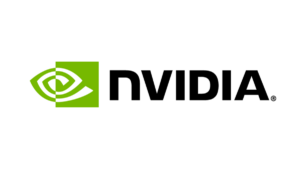Nvidia
Powering the AI Revolution
Since its founding in 1993, Nvidia has been a pioneer in accelerated computing. The company’s invention of the GPU in 1999 sparked the growth of the PC gaming market, redefined computer graphics, ignited the era of modern AI and is fueling the creation of the metaverse. Nvidia is now a full-stack computing company with data-center-scale offerings that are reshaping industry.
Training generative AI models like ChatGPT requires thousands of the fastest graphics processing units (GPUs). With 88% of the GPU market, Nvidia’s cutting-edge chips are enabling the AI boom as its industry struggles to keep up with exploding demand. Nvidia’s flagship AI chip, the H100, has been fetching $40,000 on eBay—well over its retail price.
Nvidia was founded by Jensen Huang, Chris Malachowsky, and Curtis Priem in 1993. Jensen Huang, who is currently the CEO, has been a driving force behind the company’s vision and innovation since its inception.
History:
- 1993: Nvidia was founded in Santa Clara, California, with the initial focus on producing graphics processing units (GPUs) for gaming applications.
- Late 1990s: Nvidia gained prominence with its RIVA series of graphics cards.
- 2000s: The company expanded its product line and market reach, becoming a dominant player in the GPU market for both consumer and professional applications.
- 2010s: Nvidia made significant strides in GPU technology, particularly in parallel computing and artificial intelligence (AI). It introduced CUDA, a parallel computing platform and programming model, which enabled developers to harness the power of GPU computing for a wide range of applications beyond graphics.
- 2016: Nvidia made a significant move into the AI and deep learning space with the introduction of its Tesla GPUs tailored for AI workloads.
- 2020s: Nvidia continued to expand its offerings and market presence through acquisitions, including the acquisition of ARM Holdings, a leading semiconductor and software design company.
Development: Nvidia’s development trajectory has been marked by continuous innovation in GPU technology and its expansion into new markets. Key developments include:
- Advancements in graphics rendering and processing, leading to more realistic visual experiences in gaming, virtual reality (VR), and professional visualization applications.
- Pioneering work in parallel computing, enabling GPUs to be used for a wide range of computational tasks beyond graphics, such as scientific simulations, machine learning, and data analytics.
- Expansion into data center solutions, offering GPUs optimized for AI and high-performance computing workloads.
- Integration of AI capabilities into its products, leveraging GPUs for accelerating deep learning training and inference tasks.
- Strategic partnerships and collaborations with industry leaders to drive innovation and adoption of GPU technology in various sectors, including healthcare, automotive, and finance.
Strategy: Nvidia’s strategy revolves around several key pillars:
- Innovation: Continuously pushing the boundaries of GPU technology through research and development to deliver high-performance, energy-efficient solutions for a wide range of applications.
- Diversification: Expanding beyond the gaming market to address opportunities in data centers, AI, autonomous vehicles, and other emerging markets.
- Partnerships and Ecosystem: Collaborating with industry partners, developers, and researchers to create a vibrant ecosystem around its GPU technology, enabling innovation and driving adoption in various industries.
- Acquisitions: Strategic acquisitions to complement its core GPU business, expand its product offerings, and enter new markets.
- Focus on Vertical Integration: With the acquisition of ARM Holdings, Nvidia aims to further vertically integrate its offerings and expand its presence in the semiconductor industry.
